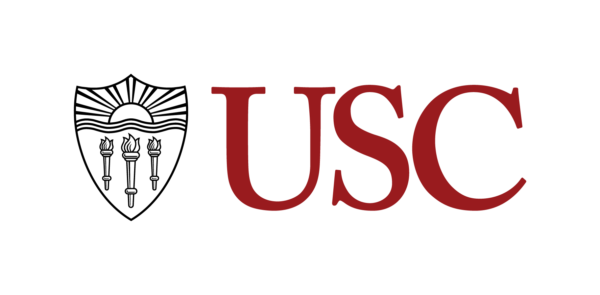Slots: 1. The Foundation will consider only one proposal from an organization in any calendar year.
Deadlines
Internal Deadline: Friday, May 9th, 2025, 5pm PT Contact RII.
LOI: June 15, 2025
External Deadline: August 15, 2025
Award Information
Award Type: Grant
Anticipated Award Amount: It is anticipated that most grants will fall in the $25,000-$50,000 per year range.
Eligible Applicants:
The Foundation supports local, state, and regional organizations in Africa, Asia, the Caribbean, Latin America, and the Middle East in the countries where the projects are based. It also supports organizations located in upper-income countries working with local partners in these areas. It does not support projects in post-Soviet states or Balkan states.
Most types of organizations that can provide evidence of their non-governmental status or charitable purpose are eligible to apply, including non-governmental organizations, nonprofit organizations; civil society organizations; community-based organizations; and colleges, universities, and other academic institutions.
Government agencies and religious organizations may be included as project partners but are not eligible for direct funding.
The Foundation does not typically fund:
- Overhead or indirect project costs
- General operating support
- Direct food, health or other humanitarian aid
- Eco-tourism
- Buildings and capital improvements
- Projects ultimately intended for private gain. All intellectual property developed with the grant should be public.
- Salaries for Executive Directors of U.S. and European-based organizations.
- Project expenses incurred before the grant is awarded.
Link to Award: https://cfhfoundation.grantsmanagement08.com/
Process for Limited Submissions
PIs must submit their application as a Limited Submission through the Research Initiatives and Infrastructure (RII) Application Portal: https://rii.usc.edu/oor-portal/. Use the template provided here: RII Limited Submission Applicant Template
Materials to submit include:
- (1) Two-Page Proposal Summary (0.5” margins; single-spaced; font type: Arial, Helvetica, or Georgia typeface; font size: 11 pt). Page limit includes references and illustrations. Pages that exceed the 2-page limit will be excluded from review. You must use the template linked above.
- (2) CV – (5 pages maximum)
Note: The portal requires information about the PIs in addition to department and contact information, including the 10-digit USC ID#, Gender, and Ethnicity. Please have this material prepared before beginning this application.
Purpose
The Conservation, Food and Health Foundation seeks to protect the environment, improve food production, and promote public health in Africa, Asia, the Caribbean, Latin America, and the Middle East.
Types of Support
The Foundation supports projects and applied research that:
- Generate local or regional solutions to problems affecting the quality of the environment and human life;
- Advance local leadership and promote professional development in the conservation, agricultural, and health sciences;
- Develop the capacity of local organizations and coalitions; and
- Address challenges in the field.
The Foundation prefers to support projects that address under-funded issues and geographic areas.
The Foundation funds applied research, pilot projects, new initiatives, training, and technical assistance, rather than ongoing support for programs that are already well underway. An important goal for the Foundation is to provide seed money to help promising projects, organizations, and individuals develop the track record they need to attract major foundation funding in the future.
Fields of Interest
The following are examples of the Foundation’s areas of interest within the fields of conservation, food, and health, and are not meant to be exclusive.
Conservation
Conservation grants promote environmental conservation through field research, projects, and advocacy that:
- Protect biodiversity and preserve natural resources.
- Help mitigate the adverse effects of climate change.
- Build the scientific and technical capacity of local conservation organizations and promote local, regional, and international partnerships.
- Increase engagement between scientists, local communities and organizations, and decision-makers.
- Partner with indigenous communities and local people.
Food
Grants in the food and agriculture program area focus on research-based projects that build capacity for self-sufficiency and resilience to climate change, strengthen local food systems, and support healthy nutrition through projects that:
- Enhance food security.
- Develop and promote sustainable agricultural practices
- Build the capacity of small-scale farmers.
- Advance farmer research and research partnerships.
- Develop environmentally sound and affordable approaches to control pests and diseases affecting important local food crops.
- Promote indigenous food sovereignty and knowledge systems.
- Address challenges of uptake and scalability through new methods of extension, education, and technology transfer.
Health
The Foundation supports efforts that test new ideas and approaches that promote public health, with a special emphasis on reproductive health and family planning and their integration with other health promotion activities. It favors community-level disease prevention and health promotion projects and efforts that help strengthen regional and country public health systems over disease diagnosis, treatment, and care provided by clinics, hospitals, and humanitarian aid programs.
Activities that help increase capacity include applied research, program development, technical assistance, and training projects that:
- Promote reproductive health and family planning.
- Address issues related to mental and behavioral health.
- Address issues relating to pollution and environmental health.
- Increase the understanding of zoonotic and neglected tropical diseases.
- Address issues relating to nutrition and health.
Key Priorities
In all of its areas of interest, the Foundation gives priority to projects that have the potential to advance the field, build local capacity, promote replication, influence public opinion and policy, affect systems change, and benefit people beyond the immediate project and its local context.
Visit our Institutionally Limited Submission webpage for more updates and other announcements.
